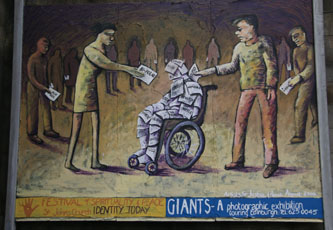Situation or Problem Analysis
"Analysis (from Greek "a breaking up") is the process of breaking a complex topic or substance into smaller parts to gain a better understanding of it." Wikipedia.
The second service that Tikambilanie offers is Situation or Problem Analysis. This follows on from the previous section assessment. It is often found that if the assessment process has been conducted thoroughly many of the constituent parts of the problem are already identified. This is one of the major advantages of using participative methods. Not only does it ease the analysis but it also ensures the accessibility of the findings to the target audience.
Once again it is important that the assessment process is conducted together with those it concerns and Tikambilanie partners acting as no more than facilitators. A number of useful tools and techniques that enable this process are described below: - Ranking – analyse preference, priorities
- Preference
- Card sorting.
- Free scoring.
- Closed scoring.
- Pair-wise
- Develop relative ranking up to 5-7 items.
- Scoring
- Community decide on criteria.
- Weight scoring to reflect more important items.
- Note conflicts during diagram construction.
- Livelihood Analysis
- Sources of income.
- Sources of expenditure.
- Dependant upon harvest, rains, work? Are there fall back plans?
- Do as individuals and as households.
- SWOT Analysis
- Strength, Weaknesses, Opportunities, Threats.
- Change weaknesses to Strengths.
- Threats to Opportunities.
- Analysis Group Discussions
- Intensive, prepared, semi-structured session.
- Information gathered will be analysed.
- Tikambilanie team members, community members and other specialised people present.
- Conflicts may / will arise.
- Takes mistakes to learn, don’t be scared!
- Innovation Assessment
- What, who and where is the problem?
- How, when and who can solve it?
- Seasonal Calendar
- Schedule days, weeks and months.
- Longer term plan over years.
- Used to plan time and activities.
- When can we have maximum presence / impact.
- Helps to plan work in conformity with main activities in the community.
|



